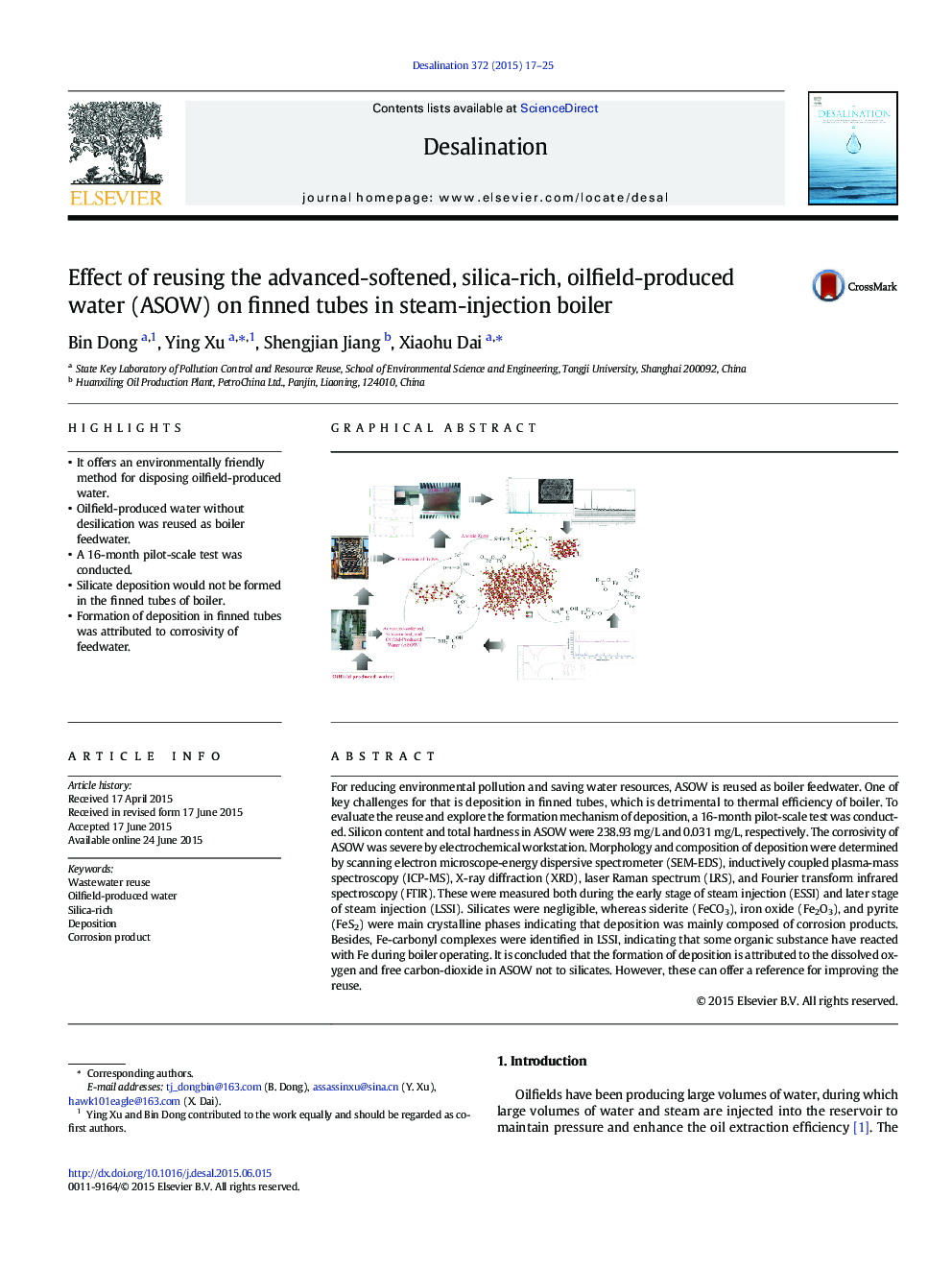| Article ID | Journal | Published Year | Pages | File Type |
|---|---|---|---|---|
| 623015 | Desalination | 2015 | 9 Pages |
•It offers an environmentally friendly method for disposing oilfield-produced water.•Oilfield-produced water without desilication was reused as boiler feedwater.•A 16-month pilot-scale test was conducted.•Silicate deposition would not be formed in the finned tubes of boiler.•Formation of deposition in finned tubes was attributed to corrosivity of feedwater.
For reducing environmental pollution and saving water resources, ASOW is reused as boiler feedwater. One of key challenges for that is deposition in finned tubes, which is detrimental to thermal efficiency of boiler. To evaluate the reuse and explore the formation mechanism of deposition, a 16-month pilot-scale test was conducted. Silicon content and total hardness in ASOW were 238.93 mg/L and 0.031 mg/L, respectively. The corrosivity of ASOW was severe by electrochemical workstation. Morphology and composition of deposition were determined by scanning electron microscope-energy dispersive spectrometer (SEM-EDS), inductively coupled plasma-mass spectroscopy (ICP-MS), X-ray diffraction (XRD), laser Raman spectrum (LRS), and Fourier transform infrared spectroscopy (FTIR). These were measured both during the early stage of steam injection (ESSI) and later stage of steam injection (LSSI). Silicates were negligible, whereas siderite (FeCO3), iron oxide (Fe2O3), and pyrite (FeS2) were main crystalline phases indicating that deposition was mainly composed of corrosion products. Besides, Fe-carbonyl complexes were identified in LSSI, indicating that some organic substance have reacted with Fe during boiler operating. It is concluded that the formation of deposition is attributed to the dissolved oxygen and free carbon-dioxide in ASOW not to silicates. However, these can offer a reference for improving the reuse.
Graphical abstractFigure optionsDownload full-size imageDownload as PowerPoint slide
